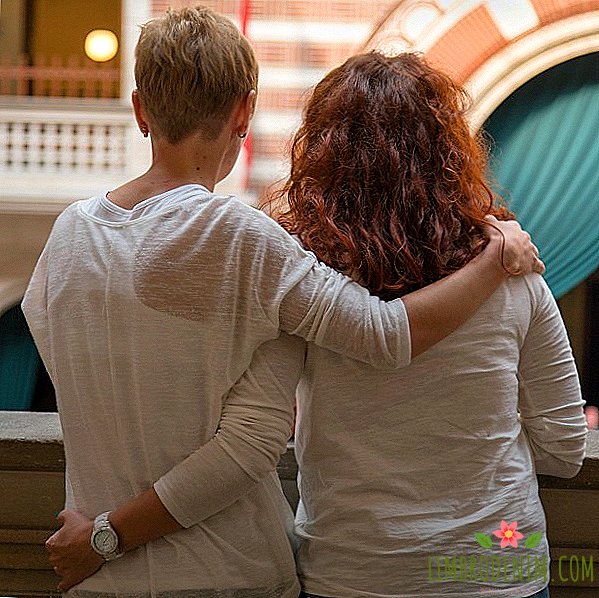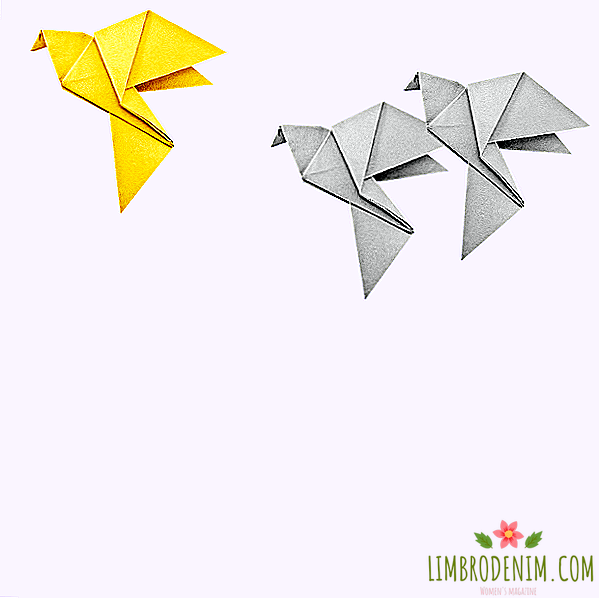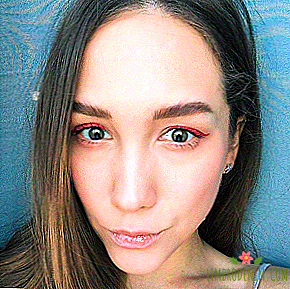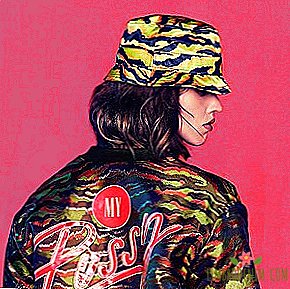"It would be great to give us back the city": I organize female excursions
Long time cultural space It remained strictly "male", but, fortunately, the situation is changing. Today there are more and more projects about women and for women - from feminist publishing to special spaces. We talked with Liza Semyanovskaya, the creator of the “Flanker” excursion, about how to return women to the urban space.

Sasha Savina
About excursions
I work in IT, and "Flanorka" is a side project, personal and loved. I occasionally have a hobby, and I thought that it would be great to invest the time and effort that I spend on them in a project from which something can turn out. On excursions, I laugh and say: "I have been interested in feminism for seven years already." I don’t know if you can get involved in feminism, but the topic of gender studies, LGBT + rights and so on has long been close to me. When I thought about my business, I, of course, really wanted it to be associated with feminism.
I wondered what I like to do and what, according to others, I do well. Judging by the reviews, I am good at speaking and telling - I did a lot of this at work, and also went to the writing courses of the publishing house No Kidding Press and even led the groups as a curator. A crowd of people do not scare me, I like to speak in public. I considered different formats, but, for example, a lecture hall is not mine: boring, plus it is implied that I probably should be a specialist in gender history with special education. Thinking about a more entertaining option, I decided that I could conduct excursions, besides, an event without a venue allows for flexibility.
In May, I went to Paris and went to Airbnb to find out what "impressions" there are (excursions and activities that are held by local residents. - Note ed.). So I found as many as two feminist excursions: the first was about feminist street art, and the second was about the women of the city. I signed up for both - in the end, the first was more activist, and the second was designed for a wide audience. So a blissful picture began to take shape in my head: I can take a tour about the women of Moscow.
I admit honestly, I was not on a sightseeing tour of Moscow, but I suspect that they mostly talk about men there - at least this is what follows from the descriptions. I tried to find excursions about women in the capital - I found one where it was written that men overshadow women and therefore it is important to talk about them, and a few more about "femme fatales", "whiskered countess", "great men mistresses" and the like. In the sightseeing tours in the best case is the place of the Empress. I thought it would be great to return the city to women.
I hoped to quickly make a tour and translate it into English (it was before the World Cup), so that all feminist foreigners came to me. Naturally, I did not have time and seriously took up the project only in October. I have a coach - I came to him with a request that I was torn to pieces: I went to get right, I got a dog in the summer, I have a terrible load at work, and I also complete a programming course, I have to start my project and write a story . We began to rake projects and agreed that you need to come up with a draft tour and as soon as possible to carry it out - to at least understand, I like it or not.
In mid-December, I have my birthday, and we thought: what could be better than to have a tour as the first part of the party? Even if I do everything very badly, my friends will hardly say this on my birthday. On December 23 I conducted the first excursion - since then there have been three or four, on March 9 there will be one more. Now I want to go on a stable schedule - two or three excursions per month.
We came up with the name together with a friend and a colleague. Hour threw options, there were probably seventy pieces. At some point, a “flanker” came to my mind. There are the words "flaner" and "fluan" - that is, walking idly. Flaner - a man who walks through the streets, looks at passers-by, sits in a cafe. When I start a tour, I usually tell the participants that we are flanker. In fact, flanking is a pretty sexist story, because this way of life was primarily available to men. I like the fact that I took this “masculine” word and made femininity out of it - it's time to return to women what they should be.
The tour takes about three hours. We walk from point to point, I tell something next to them and periodically in transitions. Since it was winter, I took special hand warmers and distributed them to everyone. We have coffee breaks, from one to three. The latter takes about fifteen to twenty minutes, we wake up a little, warm up, get to know each other and say it happens before the last point of the tour.
About heroines
I don’t have a formal education regarding women's history - in Russia, in principle, it practically does not exist. But I have the tools, I am not afraid of the need to read a lot and take notes. I spent two and a half months preparing the first excursion. It seems to me that it is much more important to start than to wait until I have accumulated enough knowledge to consider myself an expert. Now in the tour five heroines - you can spend a lifetime to understand them. We have to sacrifice the depth of immersion in order to get at least some result.
At first I sketched a list of interesting people - in the long list of about sixty-seventy. When I began to talk more often about excursions, acquaintances and friends began to send materials about other cool women I didn’t know. I wanted to do a basic, general excursion, and then go on thematic (for example, I sat down for material about revolutionaries, and then the amount of work, of course, substantial). Now the main tour takes three hours, and it has five heroines. I chose women who, in my view, are somehow connected and, most importantly, of interest: for example, the artist Varvara Stepanova and the astronaut Svetlana Savitskaya.
For this excursion, I bought ten books - for example, the autobiography of Svetlana Savitskaya, three Soviet publications of the seventies about revolutionaries, artistic biographical stories, diaries and letters by Varvara Stepanova, a collection of Amazon Avant-Garde - a monograph on an exhibition of avant-garde women. Of course, I use not only this - for example, I was looking for research papers on Google Scholar. I’ll never get to the library, although in the end I’ll have to. In general, I am engaged in scientific work in a lightweight format.
With a tour of the revolutionaries was a funny situation. I am very worried that I do not know the story well, and I wrote a post on Facebook about whether there is an infographic somewhere about the history of the 20th century, so that I could understand the context and dig deeper. A friend recommended the Museum of Political History of Russia with a cool exposition, where the exhibition "Women and Revolution" is going on. I found out that the museum is in St. Petersburg - and I went there for a day. The exhibition was very cool, I thanked her friend, to which she said: "Oh, God, I was sure that this museum was in Moscow!" It was funny - you can say that I was already on a business trip.
I said that the tour is better than a lecture hall, because there is no need for a playground. On the other hand, it is worse than a lecture hall because it is necessary to connect the city with its story. A separate layer of work is to look for addresses in order to understand which objects to show. I write them out, and then I try to verify. Recently I downloaded the register of memorial tablets in Moscow - there are several thousand of them. I looked at them all and marked out those devoted to women - it turned out that there are only 5% of them. I have five or six places on the map with each heroine - I choose two of them, otherwise the route is stretched to impossibility.
About favorite heroine
All five of my heroines are dear to me, but, for example, there is a fashion designer Nadezhda Lamanova. She was born at the end of the 19th century, before the revolution, in Nizhny Novgorod, as they write everywhere, "in an impoverished noble family." On an excursion, I always joke - I wonder what it means to be “impoverished”: three servants instead of twenty or is everything really bad? She was born among several sisters, graduated from a gymnasium — seven compulsory years — and on her own initiative took the eighth year of study. After that, she decided that she did not want to be a burden for the family and, being rather young (she was probably less than twenty), she left for Moscow and settled in the studio. When she was twenty-four years old, she opened an atelier in Moscow. Through her husband, she met Stanislavsky, and he arranged it at the Moscow Art Theater. A.P. Chekhov is engaged in costumes - she worked there for forty years, until her death. In 1905, a few years after the first atelier, she built her own five-story building on Tverskoy Boulevard - she bought a plot of land and did it with her own money.
When the revolution happened, she and her husband were imprisoned for two and a half months. But since she was indirectly acquainted with Gorky, he asked for her, and the woman was released. She continued to work, engage in theater, for example, sewed costumes that participated in the exhibition of decorative and applied art in 1927 in Paris - and won the Grand Prix. Before the revolution, she rose to the point that she was a supplier to the court of his imperial majesty, and after the revolution she continued a brilliant career - and this is surprising.
About plans
I want to go on excursions more regularly. Now I have one tour, and I am modifying it methodically - I want to add more and more cool information there and make the route more interesting and comfortable. After each, I ask for feedback - and much coincides with my own feelings. I want to have five different excursions in pieces - firstly, it’s cool, and secondly, all the heroines that I like do not fit in one. So far I am very fun to drive the general, but I think that over time it will become boring.
From the nearest plans - an excursion about revolutionaries, although there are difficulties here: a lot happened in St. Petersburg. I also think that it would be interesting to make a tour about women's life. I want to have excursions about artists, writers, terrorists, criminals. I would like the general excursions like the one that is now, there was more than one and that more modern heroines began to appear there. The only thing is, I have so far abandoned the idea of making excursions about famous women - it seems to me that this is a bit boring. It would be cool to make an interactive map - there are memorial signs, street names, objects that I show, but you need to understand how best to do it technically. Well and, probably, it is necessary to translate everything into English.





